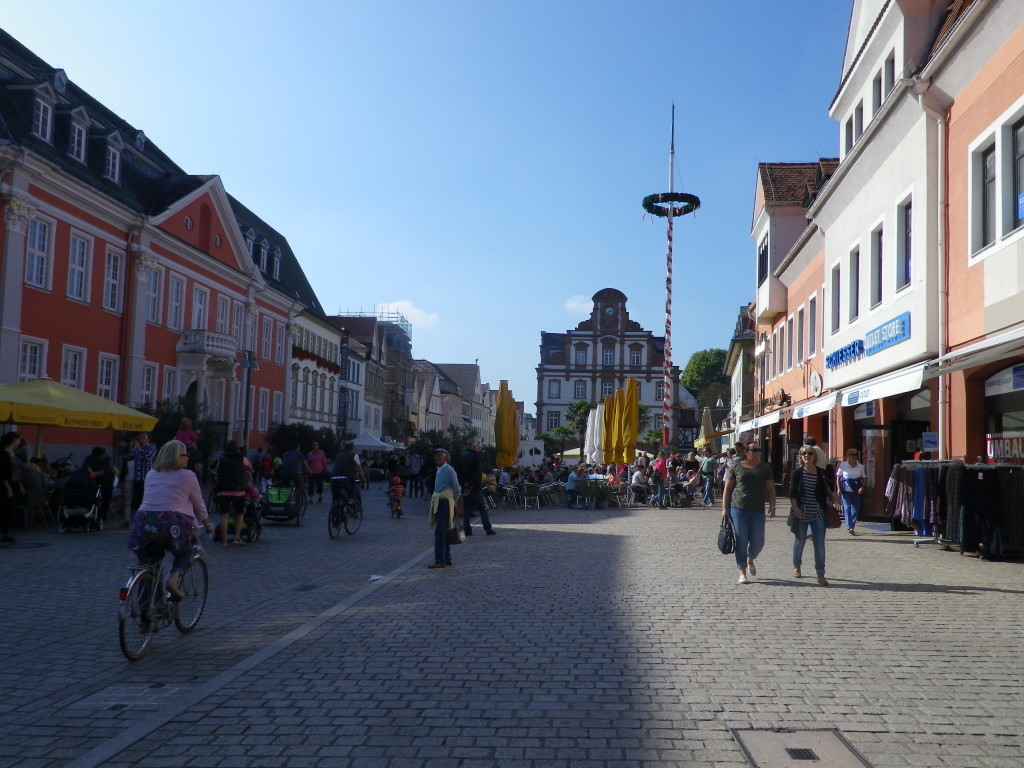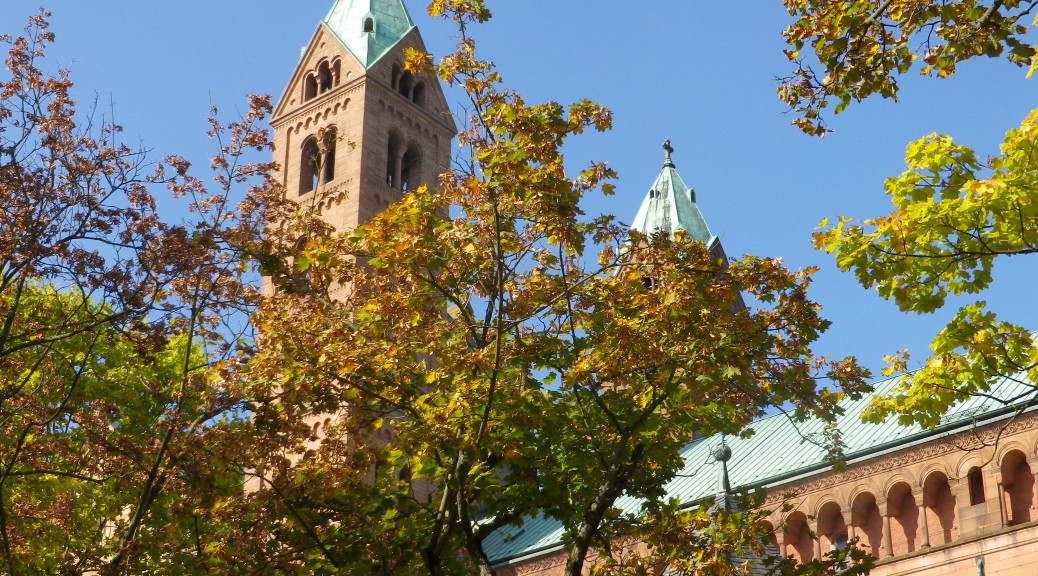I loved this trail even before I rode it. The name says it all. And what could be better than an afternoon on the Rhine, with a glass of wine in hand?
The Suedliche Weinstrasse in the southern Pfalz is one of my favorite regions in Germany. It is a small area, bounded by the Rhine to the east, and the Haardt Mountains to the west, with little wine villages studding the countryside in between. Therefore, this trail covers it all for cycling families looking for the quintessential wine-themed bike ride in Germany.
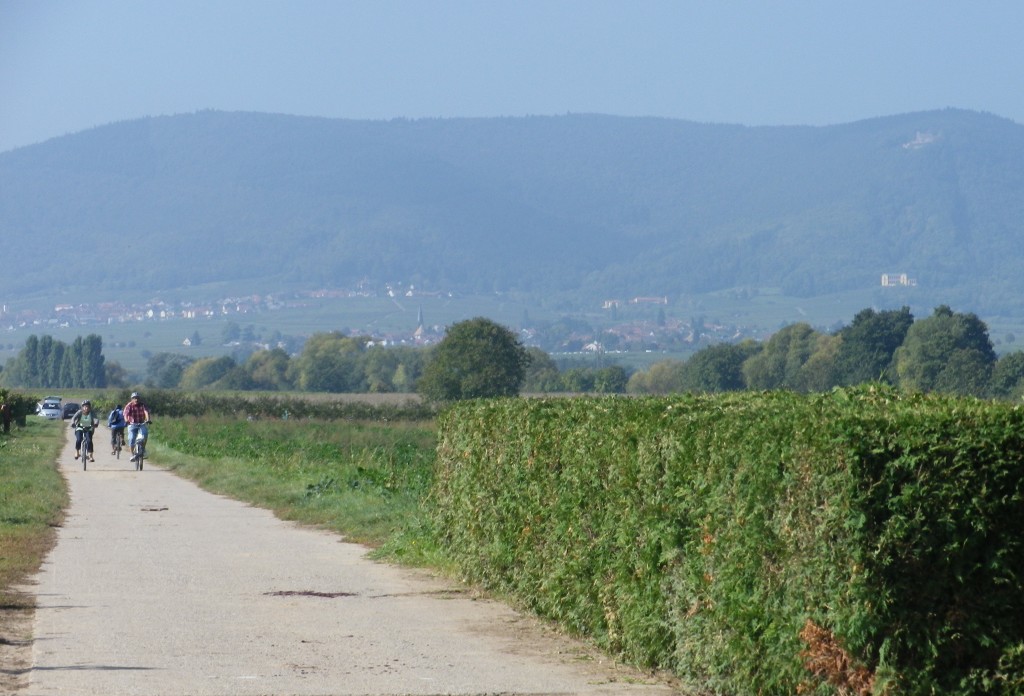
Since one of the trailheads is in Speyer, and I wanted to spend the night there, I actually began near the foothills of the Haardt Mountains, and cycled to the Rhine. Either way though, this trail would prove a delight with only gentle inclines, lots of variety and mostly on dedicated bike path, ideal for families with children. The peaceful village of Hainfeld, where the Deutsche Weinstrasse Bike Trail and the original Deutsche Weinstrasse car route intersect, was my start point. But instead of biking north or south as they do, this trail headed east toward the Rhine, pretty much following the course of the little Modenbach.
So it went, through vineyards, to the village of Edesheim. This is home to an elegant palace, originally property of the Abbey of Wissembourg, it passed to the Prince Bishops of Speyer, before falling into secular hands. Destroyed and reconstructed several times, the palace currently has an 18th century feel, and a moat. It now houses a hotel and a restaurant famed for its food and wine.
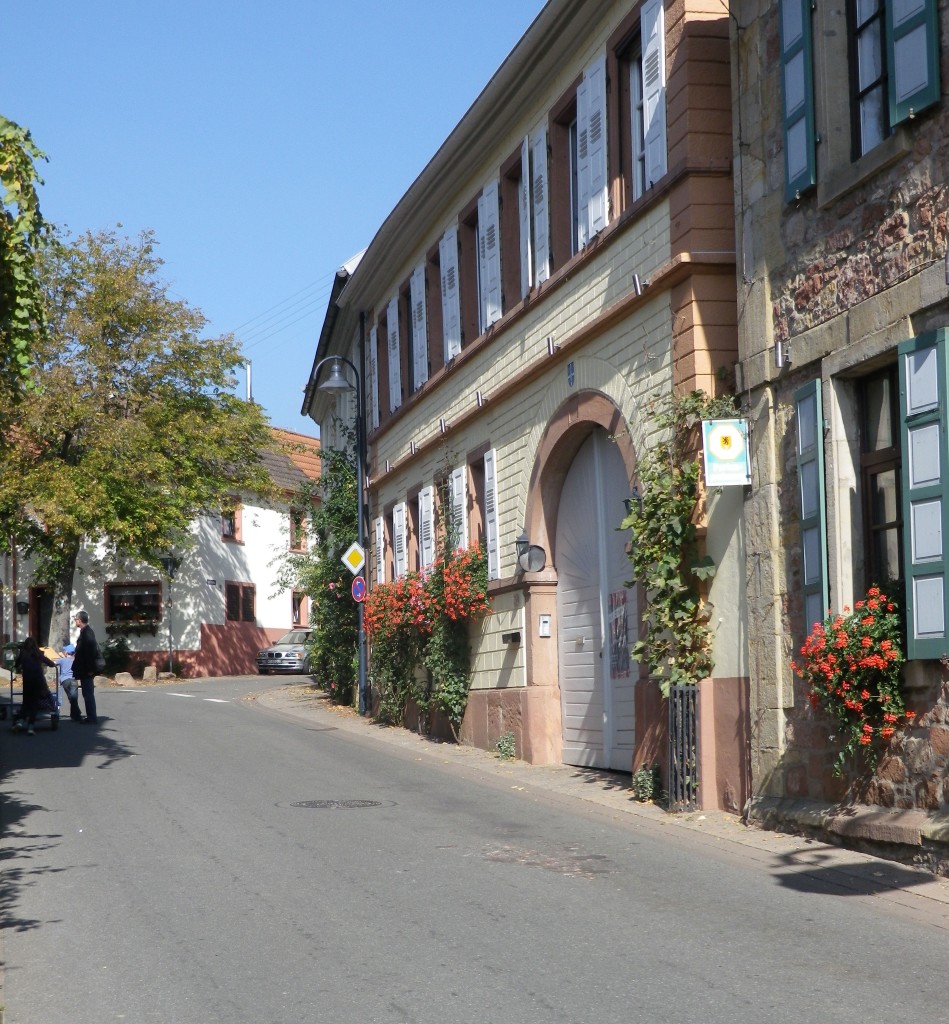
A long stretch of gentle pedaling through fields provided a great opportunity to look back and photograph the mountains behind. In this flat stretch of river plain, the vines disappeared, and soon, so did the fields, as the trail entered a lovely stretch of forest outside Freisbach. Still on dedicated bike trail, the quiet of the woods was broken only by the occasional sounds of running water. This whole area is crossed by streams heading toward the Rhine. Soon the Modenbach would merge with the Speyerbach, as the trail approached the city sharing the same name: Speyer.
One great point about riding from west to east was the perspective it offered on this magnificent imperial city. Clearing the suburbs, the Altpoertal tower came into view. This marked the limits of the old city, which grew dramatically under the Hohenstaufen emperors from its humble Roman beginnings. The sun lit the face of the old tower, bringing the old clock into high relief.
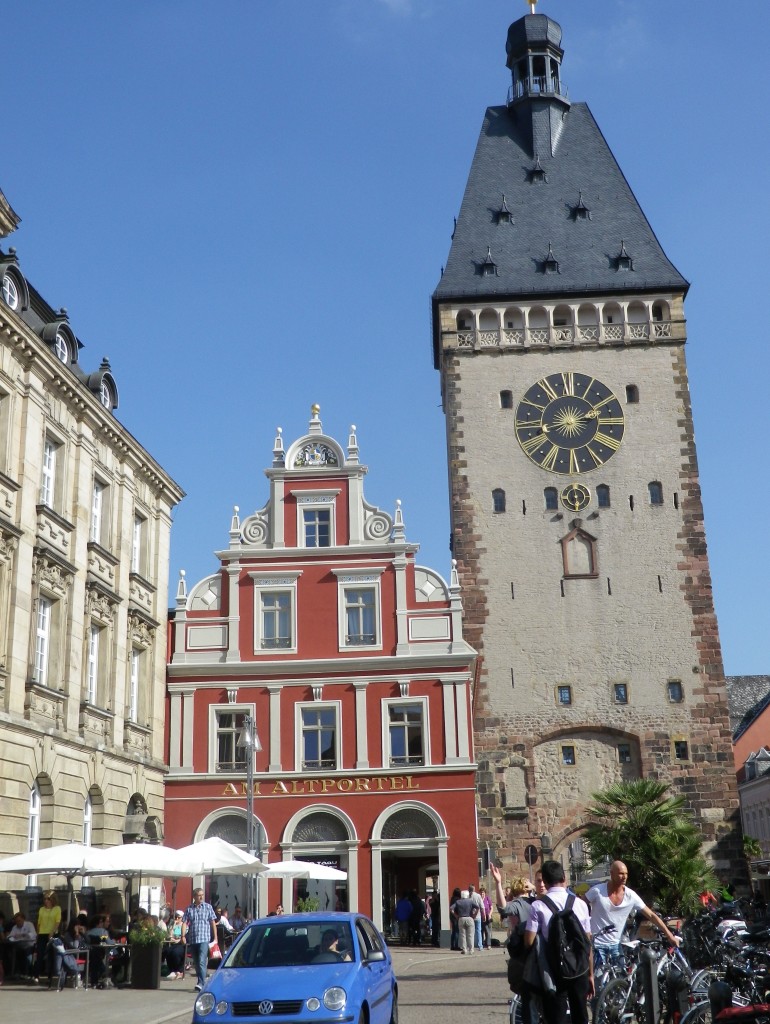
Then, came the long view of the cathedral, begun in 1030 A.D. by a Hohenstaufen. It is a magnificent example of German Romanesque architecture, and to see it from this perspective, is amazing. The trail inexplicably stops at the cathedral’s façade. (Inexplicably, because the name of the trail implies it starts at the Rhine.) Undaunted, following around the cathedral, I continued another 500 meters east to the river, to a small café. There the river roiled past, circling away from the city, and disappearing from view.
But I wasn’t finished. One reason to spend some time in Speyer is to visit its many museums. One of them is near the cathedral – the State Historical Museum. Wine has long played an interesting role in this small corner of Germany, thus this museum has many wine-related exhibits. Making my way through old wine presses, tools and casks, I found what I was looking for: the oldest bottle of wine in the world- the fourth century A.D. wine still visible! My pilgrimage done, it was time to find some contemporary local wine, and enjoy a great dinner and evening in the heart of old Speyer.
